Philip Seymour Hoffman Psychological Mind-bending Drama Needs To Be Seen Twice
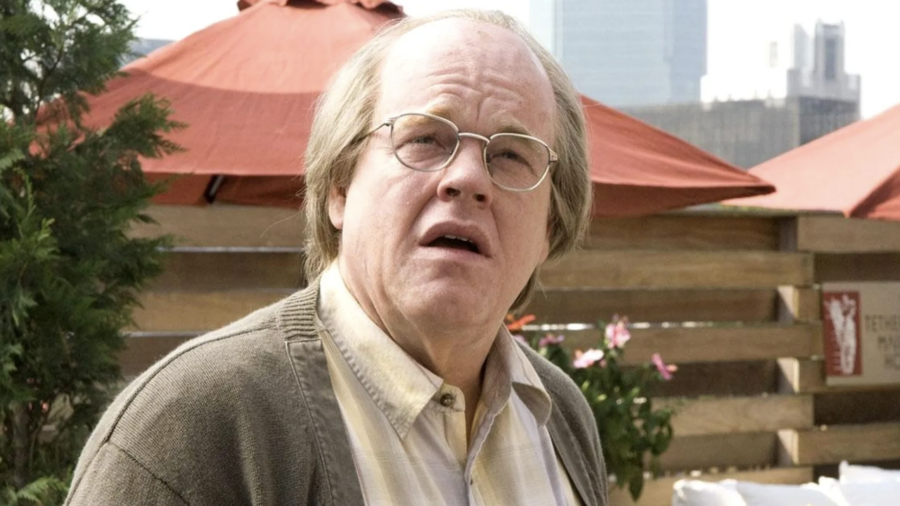
Charlie Kaufman is a screenwriter known for taking ordinary life stories and twisting them into deep original tales, often wrapped up in dreamlike aesthetics. Starring Philip Seymour Hoffman, Synecdoche, New York is a prime example of a Charlie Kaufman film, checking every box, including being mind-bending, profound, and unique. What is more important, this is Charlie Kaufman’s directorial debut.
Synecdoche, New York
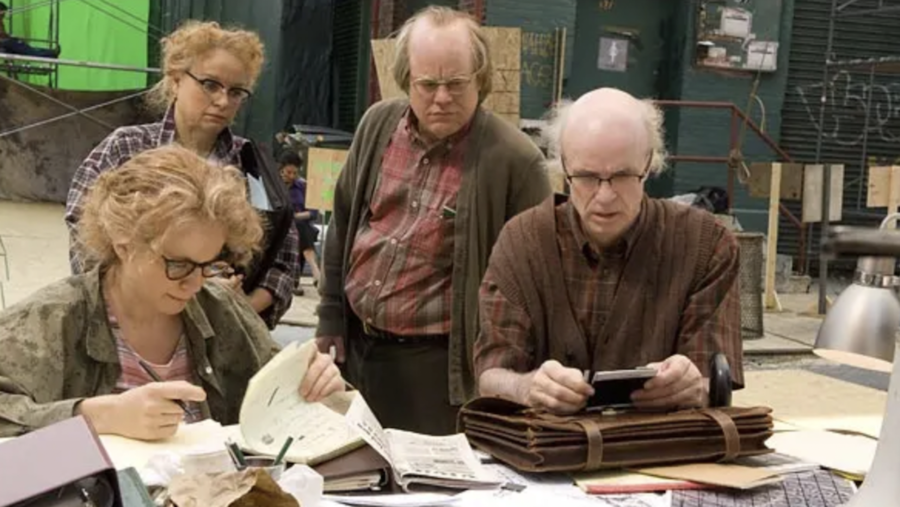
Nothing can prepare you for Philip Seymour Hoffman’s stunningly emotional performance in Synecdoche, New York. You can see the desperation in his eyes the minute the film rolls, I know I saw it. Despite professional success, a wife, and a child, Caden Cotard, a theater director, is not a happy man, he doesn’t know how to be happy. Constantly worried about his health, his hypochondriac nature takes the best of him.
Caden is praised for his reimagining of Death of a Salesman, mainly for using younger actors, and is given a McArthur Genius Grant, which sets the film in motion, as his personal life starts falling apart.
Theater Act And Reality Blur

This is where we are introduced to Caden Cottard’s grandeur ambition, larger than life. He uses grant money to buy a warehouse and turn it into a living, breathing theater set, mirroring the streets of New York City, and gives us a project like no other.
From this moment on, watching Philip Seymour Hoffman and his character in Synecdoche, New York, you will start asking a few questions as the lines between theater act and reality blur.
To make things more complex, Kaufman’s signature mark, the non-linear time comes into play.
Jumping Timelines
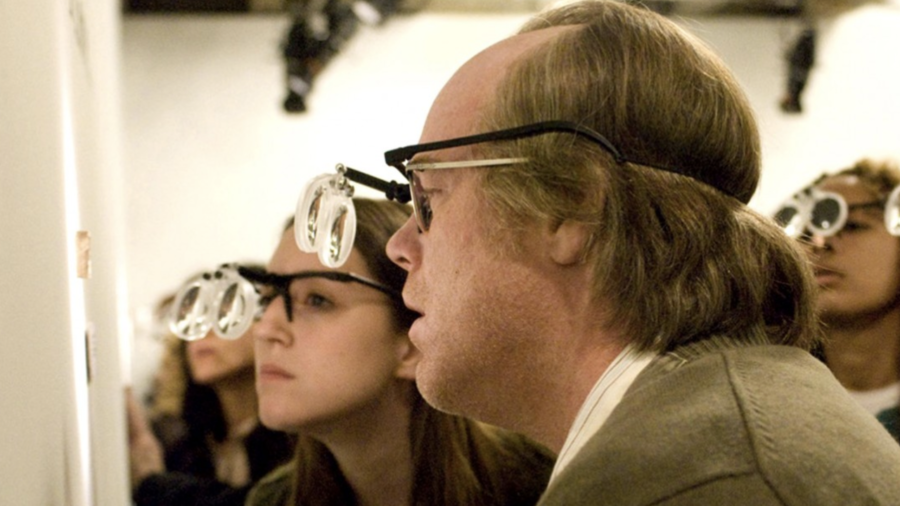
The film jumps between Caden’s past, present, and future, showing how hard it is to find meaning in life when everything is mixed up and confusing.
Caden’s selfishness hides a hidden, uncomfortable darkness, which you will discover throughout the psychological drama. His name alone refers to Cotard’s syndrome, a rare delusion in which individuals believe they are dead or rotting.
And this is not coincidental as death and the passing of time are one of the main subjects Charlie Kaufman explores throughout this directorial debut.
The Synecdoche, New York Cast
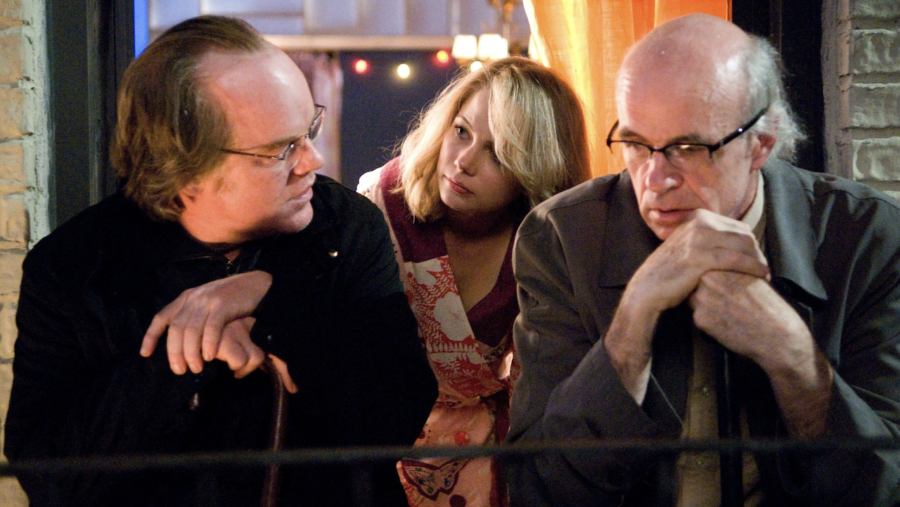
In addition to Philip Seymour Hoffman, Synecdoche, New York features a rich cast of Hollywood talent, equally important as the role of Caden to bring a project of this size to life. Some names include Samantha Morton of Minority Report fame, as Hazel, then Catherine Keener who you might know as Maxine Lund in Being John Malkovich, and Tom Noonan as Sammy Barnathan.
Originally Intended As A Horror
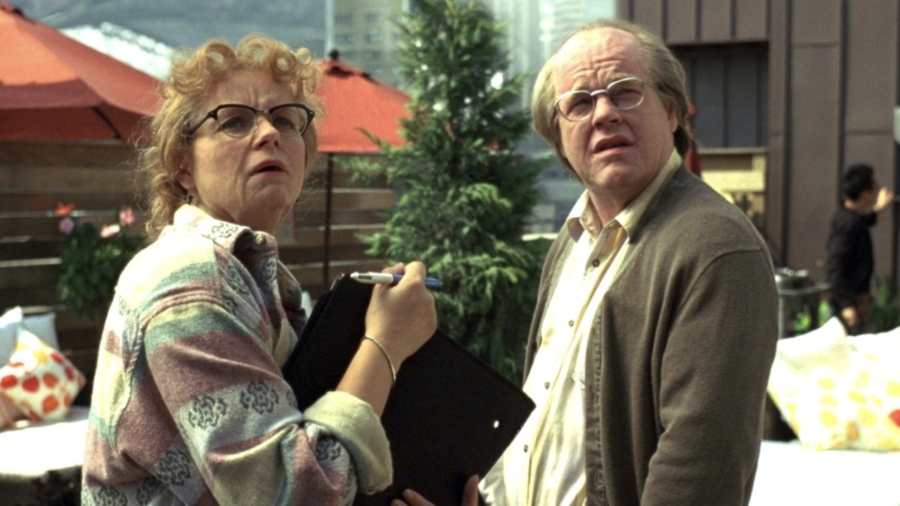
Originally intended as a horror film co-created with Spike Jonze, it eventually turned into a psychological drama worth watching more than once.
Synecdoche, New York premiered at the prestigious Cannes Film Festival in May 2008 to divided reviews. The film earned Palme d’Or and Golden Camera nominations, while in the USA it had a limited theatrical release in October 2008 and to commercial failure.
Nevertheless, Synecdoche, New York has since garnered a devoted following and critical acclaim, winning Kaufman the Independent Spirit Award for Best Feature, while receiving several other nominations and rewards.
Synecdoche, New York Review
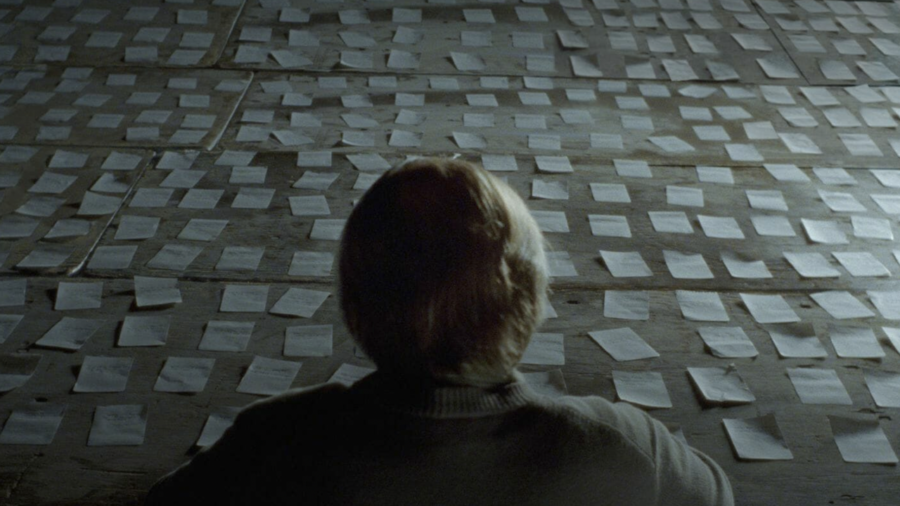

REVIEW SCORE
The film didn’t get much recognition for Philip Seymour Hoffman, but Synecdoche, New York earned him a Best Ensemble award with other co-stars at the Gotham Independent Film Awards.
The mixed reviews praised its ambition and raw portrayal of human life, while others find it confusing at most times depressing, and self-indulgent.
Nevertheless, the film is a true Kafkaesque experience, embracing also the elements of postmodernism. Love it or hate it, Synecdoche, New York will stay with you long after the credits roll. It leaves you pondering on the interpretation of the allegory about ‘your own’ failure.












